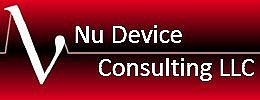
Getting 510(k) clearance is straightforward, but attention to detail is crucial. As a minimum, here are twelve steps that have to be completed. If you are considering submitting a 510(k) for your device, this list can help you decide whether existing documents and information are sufficient to prepare a successful application.
12 Steps to obtaining Market Clearance for your Medical Device
Step 1
Find the three-letter Product Code. One way is to search the online FDA 510(k) database with the device name (for example “hip prosthesis”) and see what code has been assigned to similar products. Alternatively, a trade name for a competitor’s product can be used. This will also show the Regulation Number, which gives additional information describing the product.

Step 2:
Find out what regulatory requirements are applicable to your device. If your product is not “GMP-exempt,” your company as well as contract manufacturers will be held to the QS regulations established by the FDA for medical device manufacturers. Check if there are any Guidance Documents for your device. Again, an online FDA database for Guidance Documents (Medical Devices and Radiation-Emitting Products) is the best way to get this information. If any Guidance Documents apply, make sure that manufacturing, testing and clinical testing conform to the requirements. Not abiding by an existing Guidance Document is the quickest way to have a 510(k) submission turned down. Also check to see if there are Recognized Consensus Standards which describe required tests for your device.

Step 3:
Make sure that any test results required in the Guidance Documents are available in English. The

Step 4:
Assemble the list of Predicate Devices that you plan to base your claim of Substantial Equivalence on. The 510(k) submission relies on the concept of Substantial Equivalence, which means that you must prove that your device has the same intended use and technological characteristics as existing devices which have been approved for market. The best way to get a comprehensive listing of potential predicate devices is by using the online FDA database and typing in the three-letter product code. Use as few as possible, preferably less than four.

Step 5:
Assemble information on the predicate devices you will be claiming substantial equivalence to. The most important part of the

Step 6:
Develop the Labelling associated with your device. The term “labelling” as used by the FDA is more than just the labels on the device or package. It includes any information for prescribers, advertising brochures, text on your website, in short anything that your company releases which describes your device. One easy way to develop the labels is to look at what the competition has written for their device. Make sure to follow any standards and FDA guidance. Keep in mind that any marketing claims or descriptive terms must be approved by the FDA in the 510(k) submission. Also, it is important to include any contraindications to make sure that anyone who could potentially have problems using your device has fair warning not to.

Step 7:
Assemble pictures, diagrams, technical drawings and schematics of your device. These must be in English. Depending on complexity, these will be either included in the text or attached as Appendices. You must provide the FDA with enough information to make a judgment as to the design and safety of your device.
![]()
Step 8:
Decide whether you prefer to include a Summary or a Statement in your

Step 9:
Write the 510(k) submission. Not only is the content of a 510(k) spelled out in detail, so are the table of contents and the format, down to the size of the margins on the paper. Additional elements of the

Step 10:
Pay the Review Fee. As of 2016 the fee charged by the FDA for reviewing an application is $5228. Small Businesses (annual sales of $100 million or less, pre-qualified by the FDA) get a break and pay only $2614. Use the online Medical Device User Fee Cover Sheet to make your payment and obtain a Payment Identification Number.

Step 11:
Submit your 510(k) along with proof of payment of the Review Fee. The FDA first checks the submission against the "Refuse to Accept criteria" and will respond within 15 days as to whether the submission is administratively complete. The substantive review process can take up to 90 days. Be prepared for requests for additional information. No matter what you may read or hear, nobody can guarantee fast approval.

Step 12:
If your company does not have an FDA Establishment Registration number, you will have to register your company and list any cleared device(s) with the FDA within 30 days after receiving clearance. Note that there is an annual establishment registration fee of $3845 for FY 2016. Registering your device is not the same as the 510(k) submission. The FDA does not encourage establishment registration unless a device is also being registered. All facilities and/or locations that will be involved with design or manufacturing must be listed. Non-US companies must also list initial importers and distributors. Once you get the clearance letter, make sure to update your company listing with the device registration.
